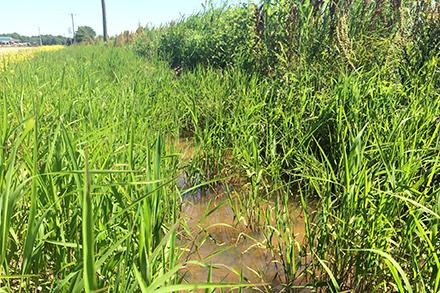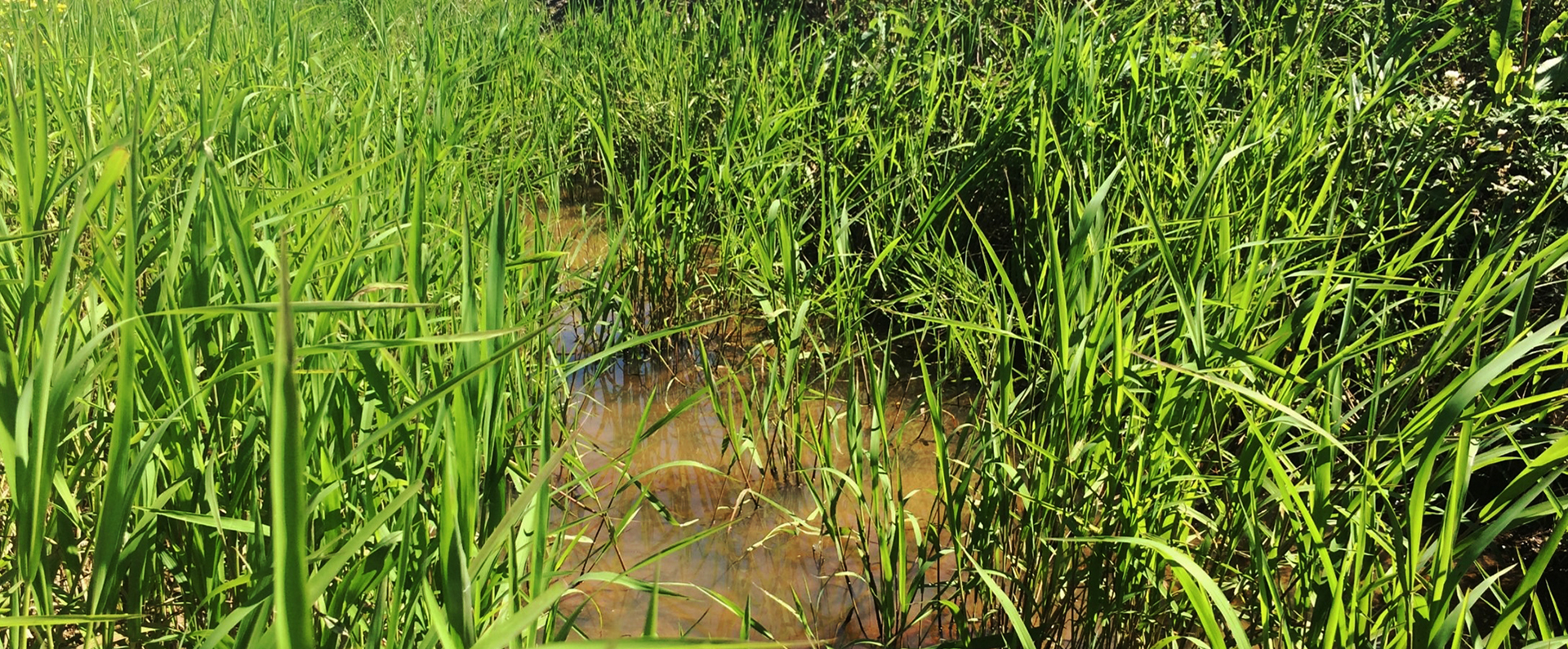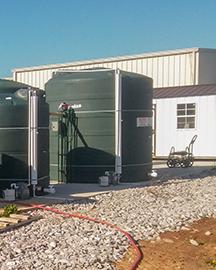Aquatic Plants to the Rescue!

Farmers sometimes remove aquatic plants growing in drainage ditches because they believe these plants will impact water flow or are unpleasing to the eye. However, ARS researchers at the Water Quality and Ecology Research Unit in Oxford, MS, a part of the National Sedimentation Laboratory, found that keeping plants in drainage ditches can benefit the aquatic ecosystem. Their research has shown that allowing managed vegetation to remain in farm ditches can result in significant nitrogen and phosphorus removal through the biological activity of bacteria and algae, and uptake by the associated aquatic plants.
Nitrogen and phosphorus in surface runoff can be serious threats to our waterways. Although these nutrients are naturally present in aquatic ecosystems, too much in the environment can pollute air and water. This pollution can result in hypoxia, a state of low or depleted oxygen in a water body. Managing vegetation in ditches can impede runoff, providing optimumal conditions for nitrogen removal by denitrification and retaining excess nitrogen and phosphorus. Reducing excess nitrogen and phosphorus in agricultural drainage networks could help lessen the farm impact of excessive nutrients in our waterways.
Related Information
Research Project: Ditch Plant Response to Variable Flooding: A Case Study of Leersia Oryzoides (Rice Cutgrass).








